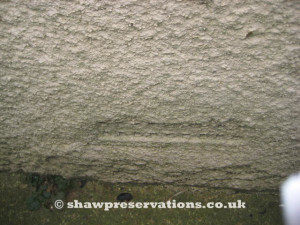Air Bricks and their purpose
We are often asked why air bricks in the wall are important. Another question we are regularly asked is “ What does my Mortgage Valuer/Surveyor mean by “improve the sub floor ventilation”?
In simple terms, an air brick is simply a brick with holes in it.
Your property should have either a solid, usually concrete, or a timber floor. If the floor is wood (timber) , there should be a void (large space) between the floor and the ground below. The timber floor is supported on joists and wall plates.
This void can become very warm with humid air, or it can become stagnant which can produce a musty smell into the room. When this happens, the moisture from the humid air can settle on the supporting and underside of the timbers which can then cause Dry/Wet Rot to start. While Wet Rot is destructive and can mean expensive timber repairs/replacements, Dry Rot can be catastrophic and cause thousands of pounds worth of damage if allowed to develop unchecked. To prevent this, the void below your wooden floor must be kept cool with constant air flow.
This is where the air bricks come in.
There are different types of air brick. The traditional type is the clay air brick, heritage air bricks tended to be cast iron – which are sometimes very ornate – and the modern air bricks are plastic. In our opinion, the clay air brick is more in keeping with the look of most properties and consequently is the one we tend to use, although this is a little more expensive than the plastic type.
They are situated in the outside wall, above ground level, but at a height so they are underneath the internal timber floor. They should never be partially submerged in the ground.
The holes in the brick allow air to flow through into the underside of your floor reducing the humidity, clearing the stagnant air and keeping the area cool.
Not only are there different types of air bricks, there are also different sizes and types. For example, If the outside ground levels have been built up and the internal floor level is lower than the outside, the air brick can have a special sleeve inserted (telescopic air brick) to allow for this.
Our surveyor will be able to advise the best type and size for your property.
After the insertion of the air brick it’s down to you, the occupier, to ensure they are always kept clear and do not become blocked which would of course affect their efficiency. Make sure that foliage does not grow up the wall, or into the holes, ensure all rubbish and debris is kept away and that the ground soil is not allowed to block the holes.



![Air-Brick-0[1]](http://www.shawpreservations.co.uk/wp-content/uploads/2016/05/Air-Brick-01-300x113.jpg)